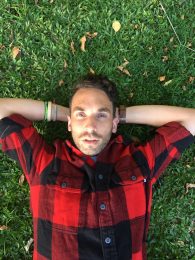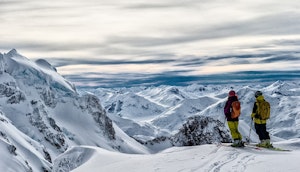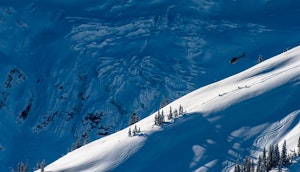For skiers and powder hounds, everything has fallen into place for Canada, especially the snow. As the sport has picked up steam over the course of the 20th century, this immense North American country has stood at the forefront the whole way, developing alongside – and at times ahead of – other traditional ski areas worldwide.
In a general sense, what’s not to love about Canadian skiing? Huge mountains define its western provinces and their uninhabited expanses. Weather patterns coming off of the Pacific, coupled with the geographic winter hot spot for premium snow quality, have made it a mouth-watering destination that holds appeal for the most tried and true snow pros across the globe. Many of the resorts and ski areas are run or operated by former Olympic athletes.
It was in this top tier winter setting that heliskiing was born, crafted on the delicious peaks of the Rockies, Columbia Mountains, Coast Mountains, and Interior Range. While helicopters were first used in the Alps and the Chugach of Alaska, mountaineering legend Hans Gmoser began Canadian Mountain Holidays (CMH) in the 1960s and created the heliskiing industry we know today.
Mountains can range anywhere from a comfortable and uncompromising 2,588 meters (Shedin) in the Skeena up to Mount Waddington at 4,019 meters in the Coast Range. The geography and weather that occur on the western reaches of the 49th parallel and to its north add to the figurative and literal perfect storm that makes Canada the top skiing destination on the planet.

But why choose heliskiing? After all, Whistler Blackcomb has some of the best and accessible backcountry known to man. And when it comes to behemoth mountain ranges, the scenery in the Rocky Mountains around Banff and Lake Louise is evocative and serene, so backcountry skiing there is sure to please. Well, heliskiing adds a whole new layer to this backcountry, and tears down any preconceived notions anyone might have about access.
What Makes Canada a Premiere Heliskiing Destination?
Unadulterated Snow
Canada has long been a destination known for not only its top grade snow quality, but also its snowfall and its snowpack. The altitude, temperature, and weather patterns that blow over a series of mountain ranges from the Pacific Ocean keep the powder light and dry. This makes for some of the safest and most enjoyable runs on Earth.
Annual snowfall can reach over 18 meters in some locations in British Columbia, so missing out on the deepest of the deep powder would be absurd. Heliskiing removes that barrier and puts you on the purest snow in the province, making sure you don’t have to worry about “how” you will ski, just “how much.”
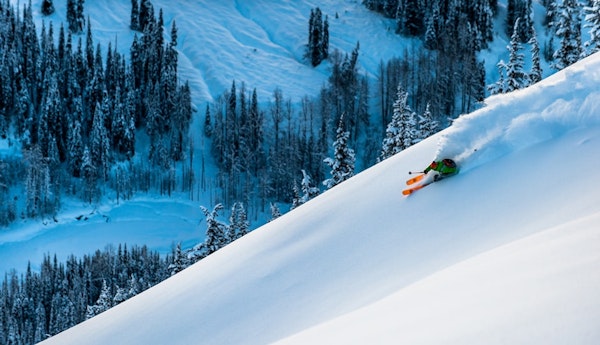
Heliski programs are usually based out of mountain lodges, or at least have heli-pad access exclusive to a group of chalets. This all-inclusive accommodation and exclusive snow access is the one-two punch that makes Canada the leader in heliskiing adventures.
History
We can argue all day about whether ski-assisting helicopters were first used in the Chugach or the Alps. What is generally agreed upon is that the discipline was brought to the forefront mountains sports in the 1960s thanks to the ingenuity and determination of the aforementioned Hans Gmoser. Communities throughout the western region, from Mica, Bella Coola, and the Skeena Mountains down to Golden, Nelson, and Squamish began to sprout and bloom into the resorts we know today.
This relatively short and new history is an exciting aspect of Canadian heliskiing. Many guides and athletes see it as a rite of passage as they progress in their careers. Skiing out of Bell 2 Lodge is more than just a luxury ski week. It’s a walk down memory lane in a burgeoning sport that is still filling itself out.
Ski resorts like Whistler and even Revelstoke are gaining notoriety for their seamless ability to cater to their guests, so its only natural that full-service ski spots bloom in the same ways. It should go without saying that, even though skiers aren’t taking to the sky in Bell 47G-2 helicopters anymore, powder hounds have an opportunity to participate in a pioneering sport on the trails where it was blazed.
Big Terrain
Most importantly, the profound terrain deserves to be appreciated in all of its glory. No other form of skiing gets this quite like heliskiing. British Columbia is nothing if not mountains, and these incredible ranges from the Washington Border to the Yukon Territory are uniquely vast and exciting.

With plenty of peaks over 2,000 meters, snowfall is a given. Whistler in the Coast. And it can dump. The northern areas of the Interior Range can get exhaustive snows that spell paradise for heliskiers. Even Revelstoke, tucked between the Columbia and Rocky Mountains, can hit 20 meters in a season. Bighorn Lodge puts you into this perfect storm for unforgettable heli-drops in the Selkirk and Monashee.
Up and down the province, there is every kind of obstacle and objective imaginable. Alpine bowls are steep, engaging, and well-packed. Chutes are narrow and, if you need them to be, challenging. Switchbacks, glades, and immaculate tree skiing are all easily accessible by chopper. The massive geology and land forms presented by the terrain is best appreciated from the sky.
Where to Go Heliskiing in Canada?
Like most Canadian skiing, the go-to destinations are mainly found at the western end of the country. With regards to heliskiing, the entire podium lies within the province of British Columbia. The bustling big city of Vancouver is a great way to get there, but it is just the tip of the ice berg, especially when it comes to the remote, memorable, and mind-boggling beauty of its heliskiing hot spots.
The generous mountain ranges that epitomize British Columbia provide an eclectic selection of great heliskiing destinations. From the diverse terrain and deep snow of Nelson in the southeast to the tailor-made programs from the Kicking Horse Mountain Resort in Golden, you can be sure to find a place that suits you best.
Here are a few of the fan favorite locations in Canada:
1. Revelstoke
Starting in the southeast between the Rockies (to the east) and the Columbia (to the west), Revelstoke is the heart and soul of Canadian heliskiing. Known for its world class snow quality, thanks to competing pressure systems from the Rockies and the Pacific, the light and dry powder would make Hokkaido blush.
Multiple heliskiing companies serve Revelstoke, including industry-forming CMH. The myriad subranges are full of undisturbed snow and peaceful wilderness. Full of forests and ridges, you can lose yourself for weeks in the snowpack without losing interest.
Views of the Columbia River, quiet lakes, and the surrounding mountains will welcome you home to your lodge every evening. When you’re ready to ski, enjoy over 500,000 acres of terrain, including those pesky and exciting glaciers of the Selkirk Mountains.
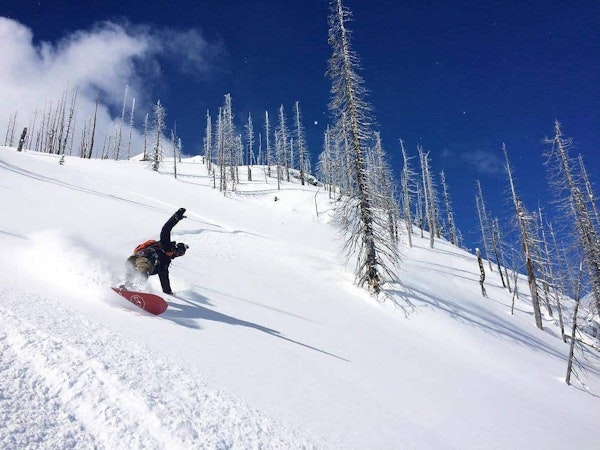
Three helicopter operators serve Revelstoke: Canadian Mountain Holidays, Eagle Pass, and Selkirk-Tangiers. A few different lodges offer incredible services and accommodations, including Echo Bay Lodge. The Bighorn Lodge is a masterpiece, with a Canadian chalet feel with modern amenities like iPads, fireplaces, and its own helipad.
In Brief
Area: South – Central British Columbia
Fly Into: Vancouver International Airport or Kelowna International. This will get you within a scenic two-hour drive through Southern British Columbia.
Difficulty: Intermediate to advanced
Duration: 3 – 12 days
Join IFMGA-certified guide Jeff on a seven-day program in and around Revelstoke in the stunning wilderness of Southern British Columbia!
2. Skeena Mountains
This isolated northern location near the Alaskan border is served by Last Frontier Heliskiing running two operations, one from the infamous Bell 2 Lodge and one from Ripley Creek. Remote terrain is the name of the game here, with nothing but steep lines and deep snowpack. The Skeena are reliably snowy and cold. This guarantees a healthy cover of its diverse and immense backcountry.
This is real wilderness, so skiers should bring their ‘A’ game to this out of the way destination. Alpine bowls, high cols, exposed ridges, and not-so-gentle glades. No wild and woolly Canadian wilderness run would be complete without exhilarating tree skiing. And don’t forget – it can drop up to 30 meters in a winter. The longest run stretches 1,900 meters at Bell 2 Lodge, which is a pretty daunting line.
These operations in the Skeena Mountains keep the guest list pretty limited. The abundance of terrain – an area 25 times the size of Les Trois Valles in France – is all for you. This is one of the largest ski territories in the world with just a handful able to access its slopes.
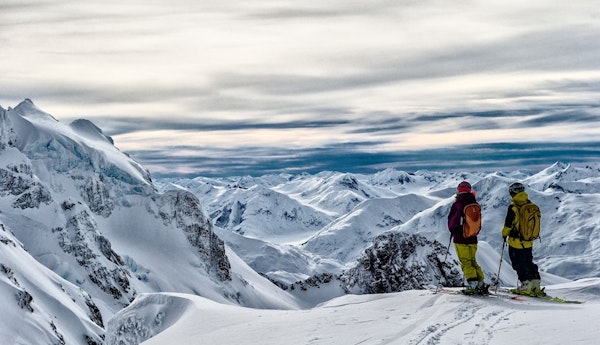
After your days riding the skies, retire to Ripley Creek and Bell 2 Lodge for unprecedented service. You won’t have much down time because of the optimal conditions, but rustic Canadian digs will add charm by the cabin-full to your trip.
In Brief
Area: Northern British Columbia
Fly Into: Smithers Regional Airport if you can’t fly into Ripley Creek. A four-hour drive will ensue. If you are unable to fly directly to the northwest, transfer from Vancouver. Juneau (Alaska) may also be an option, though it will include border crossings.
Difficulty: Advanced
Duration: 5 – 10 days
Take a private seven day heliskiing trip to Bell 2 Lodge in the Skeena Mountains of British Columbia with an IFMGA-certified guide from Last Frontier Heliskiing!
3. Whistler
This is a location that needs no introduction, having hosted the 2010 Winter Olympics and firmly placed at the top of elite skiing destinations. But even when it comes to heliskiing, Whistler has a ton of enchanting runs that will have you fall in love with this magnificent resort all over again.
Located along the southwest coast north of Vancouver, Whistler is defined by the dry snow that makes all of the Coast Mountains so appealing. Day trips from the resort and its seamless access from Vancouver make it a perfect location for flexible athletes and tight schedules. You can plan a lengthy jaunt along the Pacific or just see the major point of interest – there is something for everyone here.
A wide variety of operators run choppers out of Whistler. The terrain in the backcountry and beyond includes glaciers, bowls, steep couloirs, and open glades. The snowfall in the region can reach 11 meters, sometimes more. The classic story throughout British Columbia – you will never be wanting for snow.
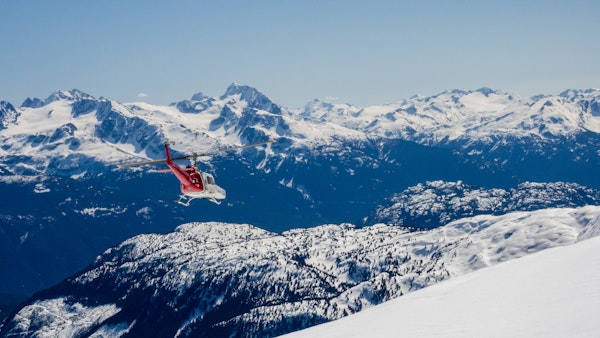
The resort and its neighbors, including Blackcomb and Squamish, provide all levels of accommodations, which can help shape a personal trip. Speaking to a guide about specific needs and abilities can make an otherwise impossible heliskiing program relatively straightforward; the luxuries of a first-class location can provide cheaper luxuries with impressive amenities.
In Brief
Area: Southwest British Columbia
Fly Into: Vancouver International, then enjoy a pleasant drive north along the Sea to Sky Highway and you’ll be there within two hours.
Difficulty: Intermediate and up
Duration: 1+ days
Come see the incomparable slopes of Whistler with a certified guide and spend a day or more heliskiing in the Coast Mountain!
What Is the Best Season to go Heliskiing in Canada?
The best time to treat yourself to a heliskiing program is from December to April, with a sweet spot in February and March. The combination of heavy snowfall, cold temperatures (to protect the quality of the powder), and the increasing light of the daily march towards spring are all beneficial for a trip in late winter.
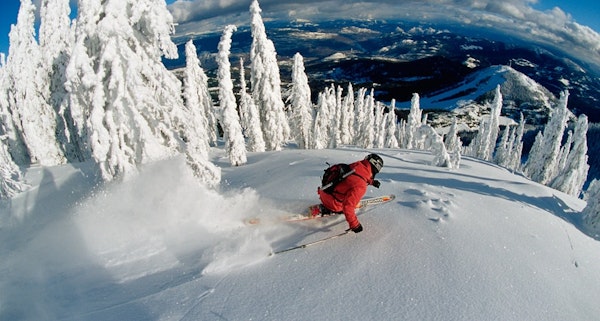
In December and January, while the powder can be the best of the best, reliable runs haven’t settled in for the winter. The storms are usually bigger and the temperatures colder, so it is certainly feasible to find a great trip early in the season.
Late season runs translate into higher-altitude tours. Corn snow is a pleasant feature of the sunnier April descents, and the snowpack adds some stability to the steeper runs. Skiing the elevated glades and bowls is recommended for spring expeditions.
How Much Does it Cost to Go Heliskiing in Canada?
Heliskiing programs vary in price for a number of reasons. Many are associated with lodges and accommodations in the mountains, providing a full-service experience every step of the way. Some locations, like Bell 2 Lodge and Ripley Creek Inn, have reputations that precede them, so you can expect a lesson in history and skiing.
Other factors include meals, duration of the stay, amenities of the lodge and program, air time, and number of participants on a given program. All of these can swing the pendulum wildly from one end of the spectrum to the other.
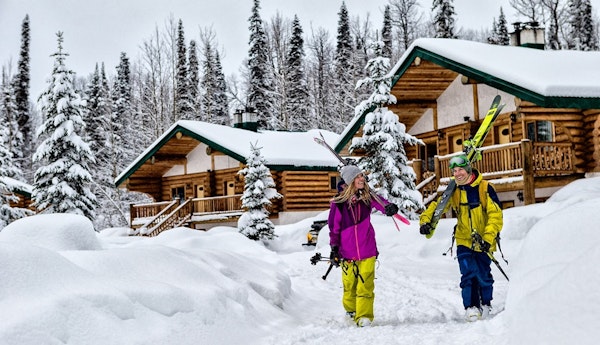
As a basis, seven-day trips can begin at just over $1,000 CAD with eight participants in the Revelstoke area. Private day programs around Whistler for a group of four begin around $1,450 CAD.
Heliskiing is worth its weight in light, fluffy, white gold. It gets you away from crowded lines and skied out slush and puts you into the best snow in the world. It’s hard to put a price on that, especially if you have a knowledgeable, local guide to take you into the hidden pockets and secret stashes of drool-inducing powder.
Epic mountains. Unparalleled snow quality. Compelling history. A vast expanse serving as a veritable snow playground. Unencumbered access. Canada has it all, so grab a guide and book your trip into British Columbia NOW for an unforgettable and life-changing experience in the home of beautiful and fulfilling heliskiing tours!

